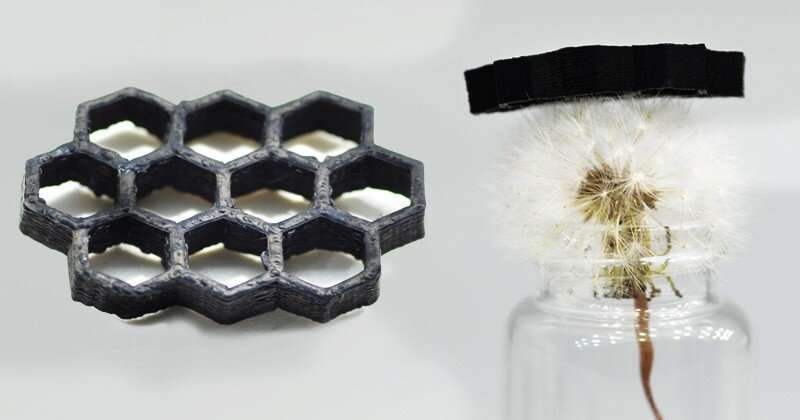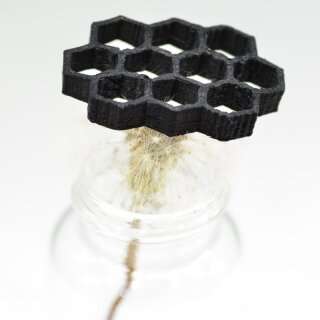New way to make 3-D carbon components

UD's Kun Fu discovers new way to make 3-D carbon components
Kun (Kelvin) Fu, an assistant professor of mechanical engineering at the University of Delaware, has used a 3-D printer to make pure carbon nanotube (CNT) architectures. Fu is believed to be the first person to make these lightweight, strong, highly porous CNT structures using a 3-D printer.
Fu's creations could be useful in the manufacture of composites, which are made from two or more materials that have different properties when combined than they do as individual materials. Carbon nanotubes can add strength to polymer composites. They are also electrically conductive and chemically stable, opening up a world of creative opportunity for use of this material in batteries and electronics, water purification and desalination technologies, tissue-engineered medical implants, and more.
"We can print a series of 3-D complex structures using carbon nanotubes. This is a pure CNT structure and no binder or polymer is needed." said Fu, "According to literature, no one can do this."
It is difficult to make high-density carbon nanotube inks concentrated enough to flow through a 3-D printer and form 3-D structures, but Fu developed a novel and completely different technique. Using a unique 3-D printing technique developed recently in Fu's lab, Fu printed a variety of complex CNT 3-D structures, including tiny replicas of the Eiffel Tower and the Great Wall of China, a small pig's face, a honeycomb, and a UD logo. Each one measures just a few centimeters wide and is strong but lightweight. The structures can sit on top of a dandelion that has gone to seed without crushing the fragile white seeds.

Fu plans to share how he did it at the IMECE International Mechanical Engineering Congress & Exposition in November.
"This is quite an exciting discovery as it opens up applications in developing miniature and intricate sensors, serving as complex catalyst supports and also in biomedical applications where the focus will be to grow cells or use them as 3-D designed scaffolds," said Suresh Advani, George W. Laird Professor of Mechanical Engineering and associate director of UD's renowned Center for Composite Materials.
Provided by University of Delaware




















